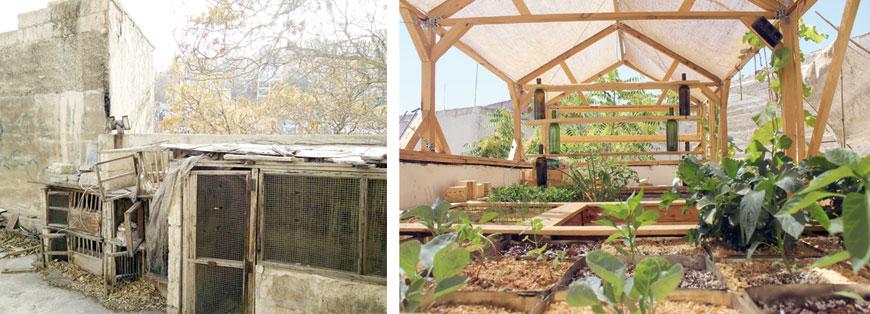You are here
Urban agriculture transforms city lifestyle to promote sustainability, community well-being
By Sara J. Faqir - Nov 25,2023 - Last updated at Nov 25,2023

Urban agriculture is practiced through methods like green roofs and indoor farming, and it offers environmental benefits, such as reducing carbon emissions and enhancing biodiversity (Photo courtesy of unsplash)
AMMAN — Urban agriculture once thought of as a hobby, has become an integral movement that is revolutionising the way food, sustainability and cities are perceived.
Omar Bawab, cofounder and CEO of a Jordanian agritech startup, told The Jordan Times that urban agriculture is the practice of growing, processing and supplying food products in or around urban areas. It can include various types of food production such as indoor vertical farming, community urban farms and rooftop gardening.
Regarding rooftop gardening and indoor farming concepts, Bawab said that “green roofs involve growing plants on building rooftops, providing insulation, and reducing energy consumption, and employing storm water management. Indoor farming in Jordan is a recent practice, which usually follows the principles of controlled-environment agriculture, reducing water usage”.
Green roofs and indoor farming can contribute positively to the environment by lowering carbon emissions, enhancing local biodiversity and converting colourless urban settings into verdant green, he added.
Indoor farms usually focus on crops like lettuce, herbs, and sometimes tomatoes, which are well-suited for controlled environments. With the right technologies, a wide variety of crops could potentially be grown indoors, helping to diversify food options. Yet fruiting plants demand a significant amount of energy, Bawab elaborated.
Mohammad Asfour, chairman of an environmental NGO, touched upon issues related to limited space in urban agriculture. “If you think about it there are many spaces in cities that can be utilised for urban agriculture projects. Other than schools and parks’ rooftops, balconies and green walls can be used. It is not about the availability of space as much as it is about effectively utilising the spaces we already have given since there are technologies that maximise productivity per square metre.”
Asfour highlighted the social and economic benefits that this practice can bring to communities by referring to studies which demonstrated that participating in an urban garden improves one’s knowledge around nutrition and facilitates healthier eating, reduces stress, promotes community development and unity, and permits practicing and experimenting new farming techniques.
From an economic perspective, food production can be essential for the community, as a way to promote healthier or more organic consumption as well as ensure food security and food sovereignty, Asfour said.
Concerning the future of urban agriculture in Jordan, Asfour stressed that it has a vast potential in promoting individual composting and homegrown food which fosters self-sufficiency. Community-wise, establishing effective governance and revising laws, such as allowing beehives in cities, will encourage broader participation.
Zaid Hwarat, an agricultural engineer, explained how they collaborate with urban planners, policymakers and community stakeholders to integrate agriculture into urban landscape. He explained “the enhancement of urban environments through strategic tree planting initiatives, such as the greening of streets with shade-providing trees, establishing roof gardens, and reducing soil sealing to facilitate efficient water drainage which improves air quality and captures CO2 emissions”.
Moreover, the repurposing of brownfields into community gardens for flower or vegetable cultivation and the creation of parks for enhancing the climate in addition to the utilisation of porous road surfaces to prevent flooding, all play vital roles in fostering sustainable urban development, Hwarat noted.
Hwarat emphasised the importance of urban agriculture as a tool in addressing climate change and promoting biodiversity within urban settings through preserving plant and seed varieties and boosting health through gardening and healthy eating habits along with the efficient use of water resources.
Urban agriculture is practiced through methods like green roofs and indoor farming, and it offers environmental benefits, such as reducing carbon emissions and enhancing biodiversity. While challenges exist, such as limited space, the use of innovative technologies and strategic planning can maximise productivity.
Related Articles
AMMAN — Driven by their passion for environment and “earthcare”, a group of foreign and local youth has joined efforts to create “Greening t
AMMAN — An environmentally sustainable project titled “Green Rooftops”, implemented by UNICEF Jordan in Jerash Camp aims to stimulate the ec
HONG KONG — With their heads in the clouds and their hands in the soil, a group of office workers are busy harvesting the fruits of their la



















